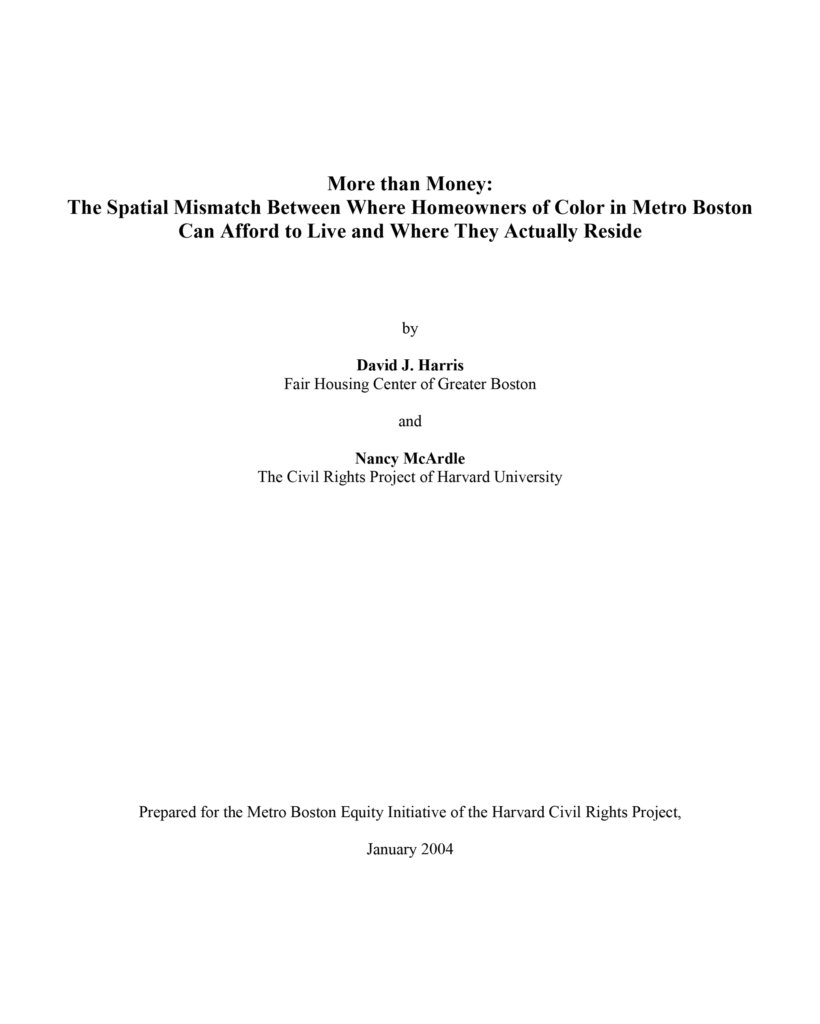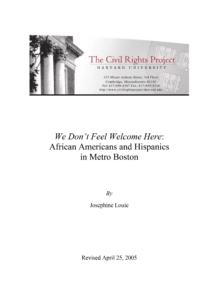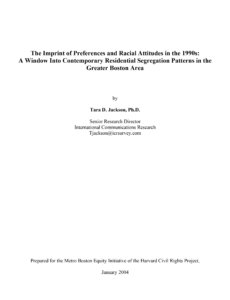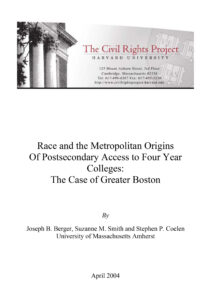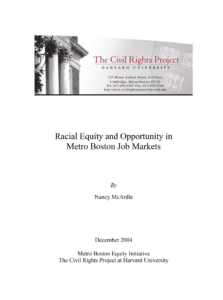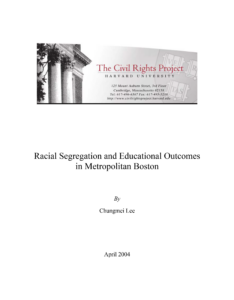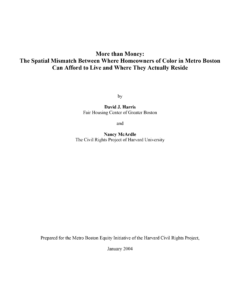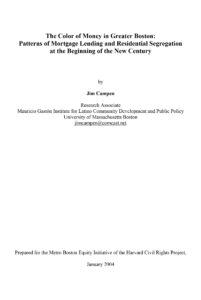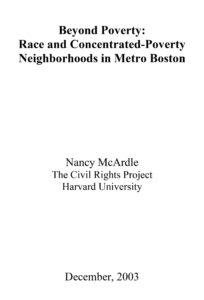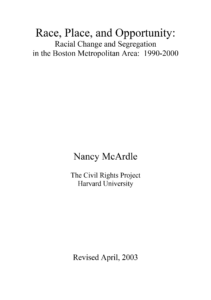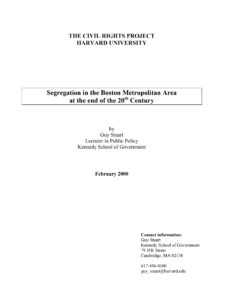Executive Summary
The 1990s brought unprecedented growth in the number of homeowners of color, but their numbers increased most in Boston and a small number of urbanized satellite cities. While African American and Latino homebuyers in metro Boston do, on average, face greater affordability constraints than whites, affordability alone does a poor job in explaining residential segregation.
Key Findings:
- African Americans outpaced all groups in terms of increasing homeownership rates, yet they still own homes at less than half the rate of whites. Boston, Brockton and Randolph posted the largest numeric gains in black owners.
- The number of Latino owners increased by 70%, with the largest numeric gains in Boston, Lawrence and Worcester.
- The number of Asian homeowners doubled over the 1990s. Communities with widely disparate socio-economic characteristics–from Lowell and Worcester to Brookline and Lexington— shared in this growth, reflecting the diversity of the Asian population.
- White homeowners increased almost exclusively in the outer suburbs, while declining in many of the satellite cities that exhibited strong minority growth.
The Metro Boston Equity Initiative is devoted to analyzing race relations and racial equity issues not simply in the city of Boston, but across the entire metropolitan region. Although greater Boston still has a large white majority and suburban sectors with very little diversity, immigration of Latinos and Asians is driving the region’s growth, and much of this population increase is taking place well outside of the city limits.
In compliance with the UC Open Access Policy, this report has been made available on eScholarship:
